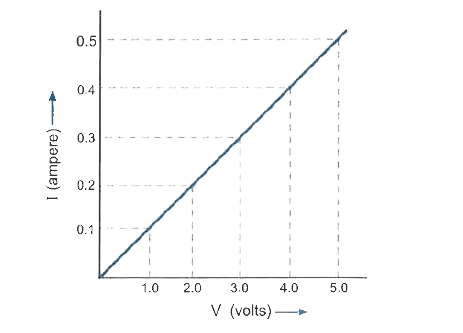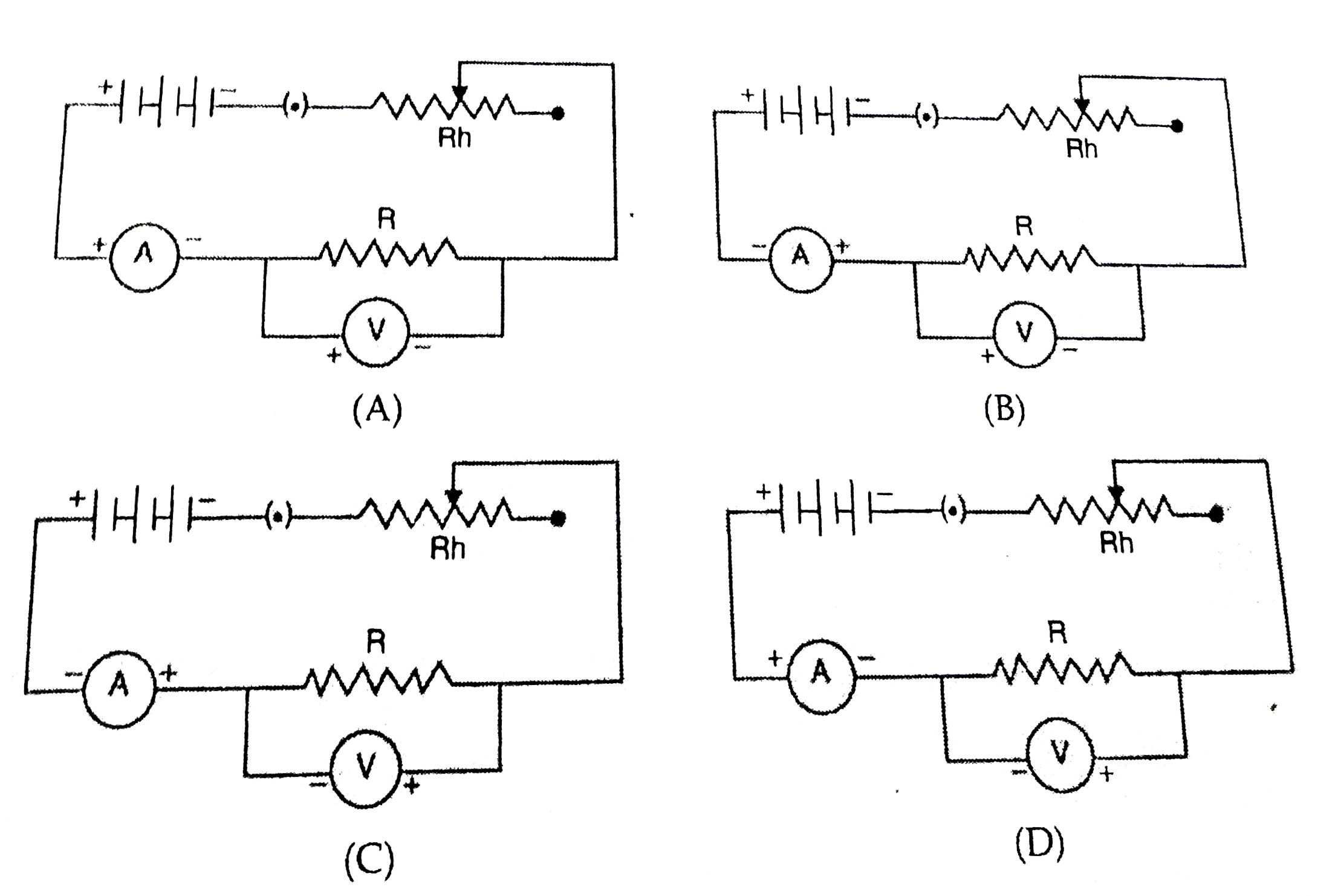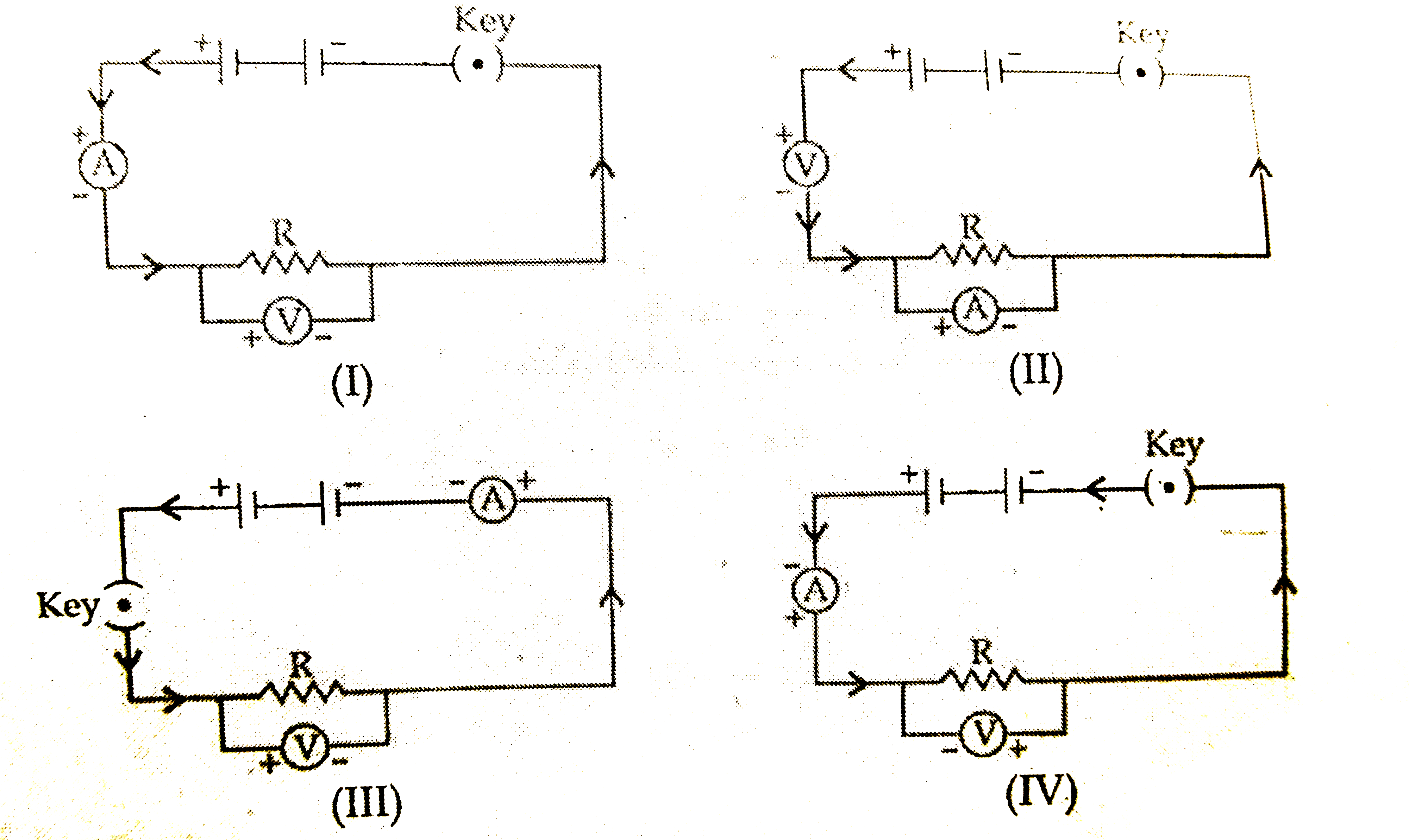In an experiment , to study the dependence of potential difference (V) on the electric current (I) across a conductor (resistor), if the circuit is on for long time, then -select two correct options from the following:
(i) Zero error of an ammeter will be changed.
(ii) Zero error of a voltmeter will be changed .
(iii) Value of a resistance will be changed.
(iv) Resistor will be heated.
To solve the question regarding the effects of keeping a circuit on for a long time while studying the dependence of potential difference (V) on electric current (I) across a conductor (resistor), we need to analyze the options provided.
1. Understanding the Experiment:
- The experiment involves measuring the potential difference (V) and current (I) across a resistor.
2. Effects of Continuous Current:
- When the circuit is on for a long time, the resistor will conduct current continuously, which leads to the generation of heat due to the electrical energy being converted into thermal energy.
3. Analyzing the Options:
- Option (i): Zero error of an ammeter will be changed.
- This is incorrect. The zero error of an ammeter is a calibration issue and does not change with the duration the circuit is on.
- Option (ii): Zero error of a voltmeter will be changed.
- This is also incorrect for the same reason as above; the zero error of a voltmeter is a calibration issue and remains unchanged.
- Option (iii): Value of a resistance will be changed.
- This is correct. As the resistor heats up due to the continuous flow of current, its resistance changes according to the formula R=R0(1+αΔT), where α is the temperature coefficient of resistance and ΔT is the change in temperature.
- Option (iv): Resistor will be heated.
- This is correct. The continuous flow of current through the resistor will generate heat, causing the resistor to increase in temperature.
4. Final Selection:
- The two correct options are:
- (iii) Value of a resistance will be changed.
- (iv) Resistor will be heated.
Conclusion:
The correct answers are options (iii) and (iv).
---
- The experiment involves measuring the potential difference (V) and current (I) across a resistor.
- When the circuit is on for a long time, the resistor will conduct current continuously, which leads to the generation of heat due to the electrical energy being converted into thermal energy.
- Option (i): Zero error of an ammeter will be changed.
- This is incorrect. The zero error of an ammeter is a calibration issue and does not change with the duration the circuit is on.
- Option (ii): Zero error of a voltmeter will be changed.
- This is also incorrect for the same reason as above; the zero error of a voltmeter is a calibration issue and remains unchanged.
- This is correct. As the resistor heats up due to the continuous flow of current, its resistance changes according to the formula R=R0(1+αΔT), where α is the temperature coefficient of resistance and ΔT is the change in temperature.
- This is correct. The continuous flow of current through the resistor will generate heat, causing the resistor to increase in temperature.
- The two correct options are:
- (iii) Value of a resistance will be changed.
- (iv) Resistor will be heated.
The correct answers are options (iii) and (iv).
Similar Questions
Draw a labelled circuit diagram to study the dependence of current (I) on the potential
difference (V) across a resistor.View SolutionIn an experiment to study the dependence of current on potential difference across a resistor, a student obtained the graph as shown in the diagram.

Find the value of resistance of the resistor?View Solution
Knowledge Check
- Question 1 - Select One
To study the dependence of current (I) on the potential difference (V) across a resistor, the correct way of connecting the ammeter and voltmeter in the circuit is :
Aammeter and voltmeter both are connected in seriesBammeter is connected in parallel and voltmeter in seriesCammeter is connected in series and voltmeter in parallelDammeter and voltmeter both are connected in parallel - Question 2 - Select One
The following four circuits have been made for studying the dependence of current on the potential difference across a resistor.

The correct circuit is :AABBCCDD - Question 3 - Select One
Graphs plotted by four students A, B, C and D for the experiment "To study the dependence of current (I) on the potential difference (V) across a resistor" are shown below :

The correct V-I graph is :AABBCCDD
If potential difference V applied across a conductor increased to 3V, how will the drift velocity of the electrons change?
View SolutionTo study the dependence of potential difference (V) on current I across Resistor (R), Four circuit diagrams are prepared.

(i) Select the circuit diagrams which are correct.
(ii) Give reason for the circuit diagrams which are not correct.View SolutionPlot a graph which shows the dependence of current I on potential difference V across a resistor R .
View SolutionPlot a graph which shows the dependence of current I on potential difference V across a resistor R .
View SolutionIf the potential difference across the ends of a conductor is i volt and the current flowing through the conductor is 1 ampere,the resistance of the conductor?
View Solution

